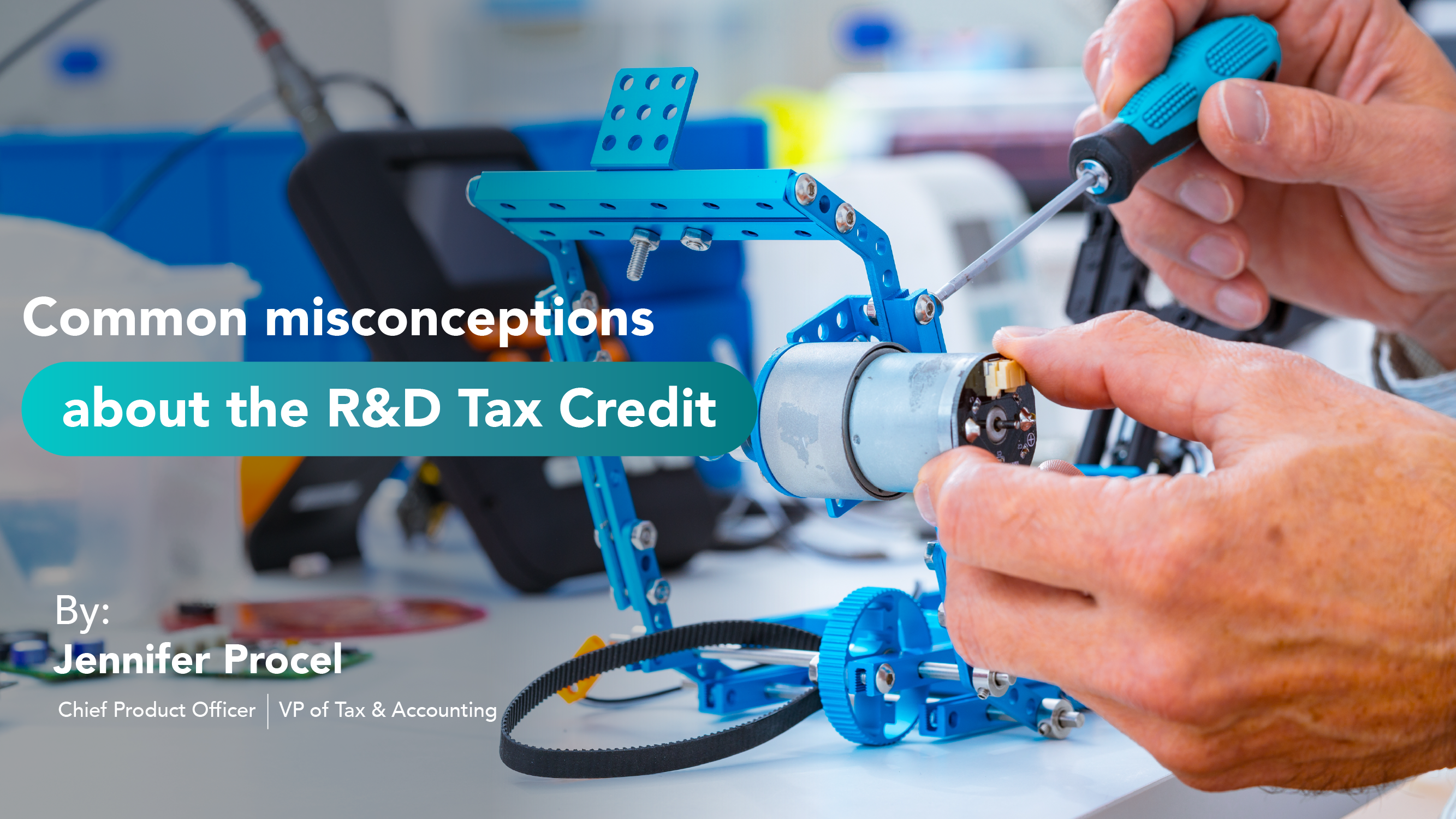Tax time is here!
As a taxpayer, both for your personal finances and for your business, you probably want to take advantage of every credit and incentive possible.
There are lots of incentives for larger firms that are well-known, so as a smaller startup, you may think that you’re not eligible for much. But there’s one type of tax credit, the R&D credit, that is great for startups of many kinds. It can make a big impact on small to medium-sized businesses throughout several industries. You don’t even need to have an R&D department to claim this credit.
Designed to help drive innovation and job creation while allowing small businesses to bring new products and services to market, this tax credit is beneficial to many startups across the country. If you’re not sure what the R&D credit is or how your business could qualify, read on! Here are details about qualifying, what counts toward the credit, and how to start on claiming your credit.
- R&D tax credit can help you grow your small business!
Officially, this credit is known as the “Credit for Increasing Research Activities,” but most people call it the R&D credit. First developed in the 1980s, this tax credit is intended to drive technology and innovation. The R&D credit rewards businesses that are developing new and improved products and processes. And there’s good news for today’s businesses: the rules have become a bit more relaxed in recent years, which means that your business is more likely to qualify. Plus, depending on which state you’re in, you could receive R&D credits toward your state tax in addition to your federal tax!
- Many startups miss out on this credit opportunity.
The R&D credit is one of the lesser-known government incentives available. Unfortunately, there are lots of businesses out there that are missing out on the credit opportunities available to them. When you’re first starting a business, every dollar counts! Some small businesses miss out altogether because they don’t realize that they’re eligible, while others claim only part of the credit that they’re eligible for. If you’re bringing a new product or process to market, make sure to find out what you’re eligible for and claim it!
- An R&D credit can help you to subsidize your R&D costs while creating better products.
Research and development is a crucial stage when you’re creating innovative new products and processes, but sometimes, lack of resources limits you in this area. It often takes a lot of people to design, develop, prototype, manage, and document this type of process. Even if you have a small team, the expenses can be high, particularly when you’re just starting out. Subsidizing these costs gives you more runway to build your business!
- You can capture many costs including wages, supplies, consultant fees, contractor fees and more.
To claim your R&D tax credit, you’ll need to provide proof of everything that’s eligible for the credit. Qualified wages are one of the main things covered by this credit. Are you bringing a new product to market? The wages of the people developing your product’s core design and functionalities, the people who are building the prototype, and the people who are overseeing the process can all count as qualified wages.
You may be able to claim other costs like prototyping, tooling/supply expenses, packaging, surveys, studies, software costs, equipment, the documentation of your R&D, and more. You’re allowed to apply up to $250,000 of your research expenses against your payroll tax or income tax for up to five years, even if you’re pre-revenue. This means that you can essentially get back around 10 to 15 percent of what you spend on R&D. Or, you can offset it against your federal income tax.
- Your business can qualify if…
Many different types of businesses qualify. But for the most part, manufacturing and tech companies are the target of this tax credit. When this credit was first enacted in the 1980s, it directly targeted manufacturers, though the rules have changed slightly since then. In a nutshell: do you need to research and experiment in order to develop new products? Does your business have a gross receipt of less than $5 million? If so, you may qualify. But to make sure, it’s often a good idea to consult someone with experience in this area. A quick conversation can tell you whether you’re likely to qualify, at which point you can move on to the next steps of calculating and claiming your credit.
- The R&D tax credit is best calculated with the help of an accountant or consulting firm.
Your average bookkeeper may not have the knowledge and skills needed for an R&D study, so you’ll likely have to hire someone who specializes in credits like these. The IRS is serious about documentation and substantiation for these types of things, so you don’t want to mess up and potentially end up with a fine if you get audited.
These people will be able to figure out exactly which expenses qualify and how to prove everything. You’ll stay in the clear and you also won’t leave any money on the table if you work with an experienced accounting or consulting firm on this. IOOGO has experts on the team that can help your startup business start the process today.
- Filing for the credit shouldn’t cost thousands of dollars.
In order to claim the credit, you must file Form 6765. This is a form filed with your business tax return. Most accountants will charge separately for the form, but if you have an established relationship with your accountant, it shouldn’t cost you thousands of dollars or more than the tax return itself. Beware of accountants or companies that charge a percentage of the savings in payroll taxes. This is an illegal practice as stated in section 10.27 of IRS Circular 230.
Now that you know about the R&D credit, don’t become one of the many startups that fail to claim it! It may not seem like much right now, but with tax incentives like the R&D credit, you’ll enable your small business to take great strides toward innovation.





